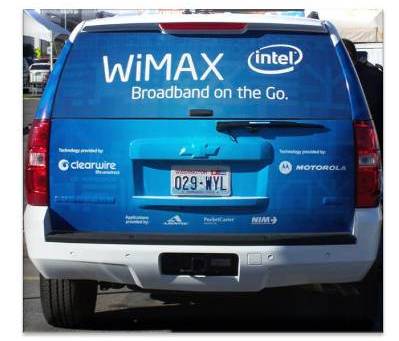
There’s been a lot of WiMAX chatter the last couple of months. For example, the major announcement in May of new financial backers for a US network (Comcast, Time Warner Cable, Google, Intel and Bright House). And yesterday came the much lower-profile, but still highly-important news of the first successful round of WiMAX certifications by the WiMAX Forum. Certification means interoperability, which is critical for any large-scale deployment.
Amid the flurry of recent WiMAX coverage, it’s been difficult to pin down the important facts for Joe Q. Public. After all, what normal person really is interested in spectrum frequencies? 700 MHz or 2.5 GHz – who cares as long as it means high-speed wireless Internet access?
Here are some of the important conclusions I’ve arrived at, several with the help of Paul Kapustka’s “Game On, WiMAX!” report. This is what consumers in the US should be interested in and what WiMAX has going for it.
What should matter to consumers:
- Per-use payment options – No requirement to pay a WiMAX monthly service fee if you’re only going to connect once or twice a month
- Handsets don’t have to be subsidized, meaning you’ll be able to buy anything WiMAX-certified at retail and automatically have Internet access
- The new Clearwire service will use mobile WiMAX instead of fixed WiMAX, which means you can literally stay connected while moving at high speed down a highway (Side note: Interestingly, I heard major pessimism around mobile WiMAX from one large industry analyst firm earlier this year. Premature reaction?)
- Nationwide network – before the new investors got on board, it wasn’t clear if WiMAX could scale beyond a few metro areas; now a nationwide build-out is assumed
- “[Some] observers see WiMAX silicon getting small and cheap enough to find its way into a wide range of consumer gear, such as digital cameras — which might also have their broadband connectivity built into the purchase price, like Amazon’s Kindle book reader.” -Sidecut Reports
What WiMAX has going for it: